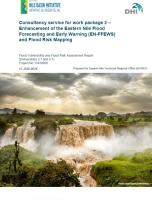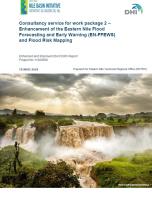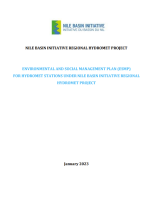Abstract
The Nile Basin is endowed with rich and diverse wetlands crucial for the provision of multiple ecosystem goods and services, beneficial to its citizens, economies and associated ecosystems. Despite the benefits offered by these wetlands, they continue to be heavily fragmented, degraded and reclaimed due to human activities such as encroachment for settlement, conversion into agricultural lands owing to population pressure, grey infrastructural development and weak implementation of policies protecting wetlands. For wetlands that are transboundary in nature, the above challenges are exacerbated, which only works to compromise their health and integrity.
In order to maintain their biological diversity and productivity, and to permit the wise use of their resources, there is need to develop and implement focused management actions, and where they exist, conduct regular reviews to address emerging issues in line with the
changing context of the environment in the wider wetland landscape.
Nile Basin Initiative (NBI) in collaboration with the Deutsche Gesellschaft für Internationale Zusammenarbeit (GIZ) GmbH has contributed to these efforts under the ‘Biodiversity Conservation and Sustainable Utilisation of Ecosystem Services of Wetlands of Transboundary Relevance in the Nile Basin,’ project. Through this project, NBI mandated Wetlands International to undertake among others, develop Transboundary Wetland Management Plans for three wetland landscapes: Sio-Siteko (Kenya and Uganda), Semliki (Uganda and Democratic Republic of Congo) and Sango Bay-Minziro (Uganda and Tanzania). These plans were reviewed and adopted by the respective governments in a virtual workshop held on 2 June 2020.
The project served as a critical avenue through which the partnership leveraged and synergised its comparative advantage in support to the development and implementation of fast-track measures or pilot actions that inspire and motivate stakeholders to implement measures that respond to the various challenges identified in the Transboundary Wetland Management Plans for the three wetland landscapes.




